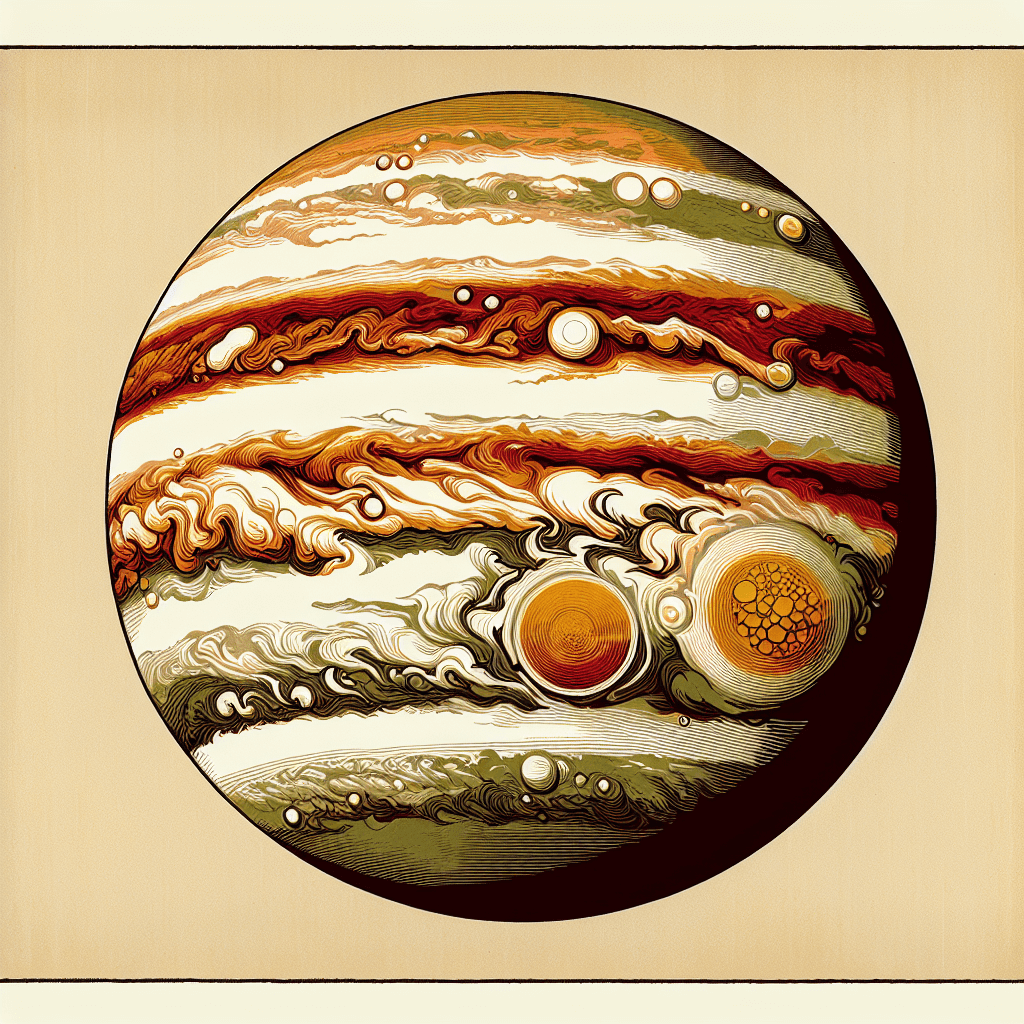

syndu | Oct. 28, 2023, 10:14 a.m.

Jupiter, the largest planet in our solar system, is a celestial body that has fascinated astronomers and space enthusiasts for centuries. Known for its distinctive stripes and swirling storm systems, Jupiter is a gas giant with a lot to offer in terms of scientific interest.
Jupiter is a behemoth, with a mass that is 2.5 times that of all the other planets in the solar system combined. It has a diameter of about 86,881 miles, making it 11 times wider than Earth. Despite its size, Jupiter has a very fast rotation speed. A day on Jupiter lasts only 9.9 Earth hours, the shortest of all the planets.
Jupiter's most recognizable feature is its bands of clouds that create a striped appearance. These bands are created by differences in the thickness and height of the ammonia ice clouds within Jupiter's atmosphere.
Jupiter's atmosphere is primarily composed of hydrogen and helium, similar to the Sun. It also contains trace amounts of methane, water vapor, ammonia, and silicon-based compounds. The planet's atmosphere is known for its Great Red Spot, a storm that has been raging on Jupiter for at least 300 years. This storm is so large that it could contain two or three planets the size of Earth.
The climate on Jupiter is extreme, with temperatures, pressures, and types of precipitation that are unlike anything we experience on Earth. The weather systems on Jupiter are driven by the planet's internal heat, which creates a lot of convection and atmospheric turbulence. This results in storms and lightning much larger and more powerful than those on Earth.
One of Jupiter's most unique features is its powerful magnetic field. It is the strongest of any planet in the solar system and creates stunning auroras at the planet's poles, similar to the Northern and Southern Lights here on Earth.
Jupiter also has a faint ring system and a whopping 79 known moons, the four largest being Io, Europa, Ganymede, and Callisto. These moons are fascinating in their own right and are the focus of ongoing study for their potential to harbor life.
Jupiter is a celestial body of extremes. From its massive size and powerful storms to its numerous moons and strong magnetic field, Jupiter continues to captivate and intrigue. As we continue to explore this gas giant, who knows what other secrets it may reveal?